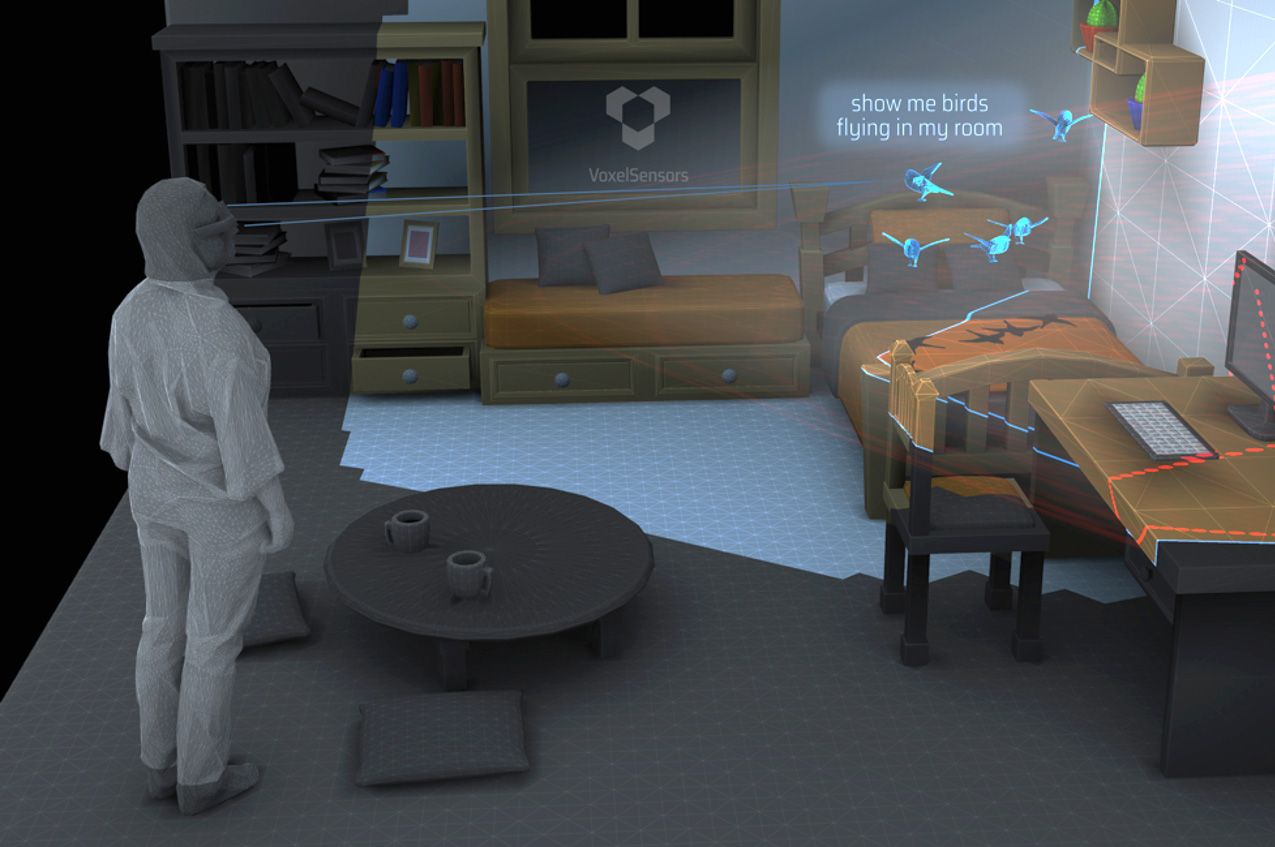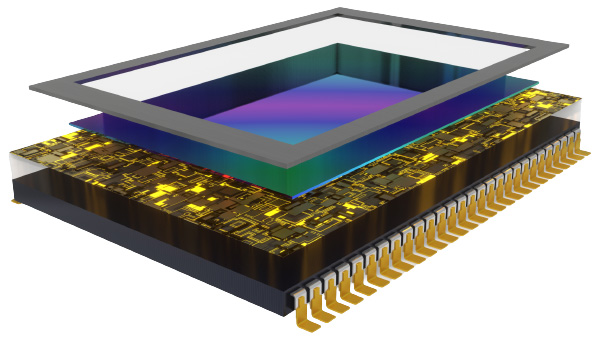Artist view of XR experience. [Image: VoxelSensors]
The Belgium-based startup firm VoxelSensors, which works on sensing technology for interfaces for mobile, extended-reality (XR) and industrial applications, said it has acquired the intellectual and industrial property of the Israeli company EyeWay Vision. VoxelSensors believes that integrating EyeWay’s IP—particularly in areas such as gaze-tracking and projection—with VoxelSensors’ proprietary sensing technology will help “unlock next-generation user experiences across various devices.”
The acquisition announcement comes a few weeks after VoxelSensors disclosed, on 30 January, that it had wrapped up a seed-funding round that has pulled in a total of €9.5 million from multiple investors. The firm hopes to use the seed funding to boost “international growth, technology advancement, and customer engagement” for its devices—as well as to lay the groundwork for a Series A funding round to continue the momentum.
SPAES architecture
VoxelSensors’ business case rests on its proprietary Single Photon Active Event Sensor (SPAES) architecture, a CMOS-based scheme that the company maintains “operates at the boundaries of physics.” The architecture—which the company is initially marketing in depth-camera systems under the trade name Andromeda—includes arrays of single-photon avalanche diodes (SPADs) that the company says can be “triangulated” to build a 3D voxel with less than 10 photons, at a rate of up to 100 million voxels per second.
VoxelSensors’ SPAES chip. [Image: VoxelSensors]
The photon-stingy SPAES approach makes the technology “extremely power efficient,” producing 3D data with “the absolute minimum amount of energy consumed,” according to VoxelSensors. The firm also claims “ultra-low latency” for the technology, which it says can produce depth data 100 times faster than any other technology, while operating in any light conditions.
The company plans to preview its first “spatial awareness” system for mobile devices, which includes a single SPAES sensor chip and a single illuminator, at the Mobile World Conference (MWC) in Barcelona this week.
The EyeWay angle
VoxelSensors believes that the acquisition of EyeWay’s IP fits into its strategy for using SPAES to create “spatial and empathic computing experiences,” especially in the XR space. EyeWay has worked in XR-glasses development since its founding in 2014.
Of particular interest to VoxelSensors is EyeWay’s gaze-contingent projection architecture and a variety of underpinning technologies. These technologies, VoxelSensors says, can address a variety of “critical XR requirements,” including power efficiency, dynamic range and photorealistic image creation. Interestingly, the firm maintains that the EyeWay architecture also offers a possible “solution for vergence–accommodation conflict,” the psycho-physical paradox at the root of some complaints of motion-sickness-like symptoms experienced by many XR users (see “Brilliant Idea or Big Headache?,” OPN, January 2024).
Commenting in a press release, Johannes Peeters, the CEO of VoxelSensors, said the acquisition of EyeWay Vision’s IPs and the mobile depth system marked “key milestones” for his company.
“Together, these advancements position us as a major player in the rapidly evolving spatial and empathic computing market for mobile and XR devices,” according to Peeters. “By combining our technologies, we can offer seamless and intuitive interactions in these domains, significantly enhancing user experience while utilizing our efficient SPAES sensor.”


